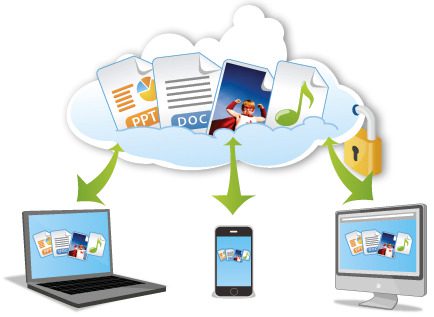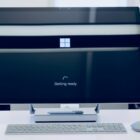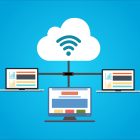In previous blog posts, we have talked a lot about the cost-effectiveness of Desktop-as-a-Service and how much businesses can save from big capital investments into hardware on-premise technology and portable endpoint devices.
But what actually is the set-up of traditional desktop virtualization technologies?
Previously, only a small chunk of businesses could afford to make use of remote virtualization set-ups like VDI and traditional on-premise server architecture. Now, what we see is an entirely different story thanks to DaaS and its capabilities to connect employees to the cloud seamlessly, from any geographical location they’re based. Desktop-as-a-Service made remote virtualization more accessible to businesses of all sizes, but it also made it a whole lot easier for employers and employees from an organizational perspective. Before DaaS, on-premise technology required the staff to use workstations, taking a lot of space and consideration into arranging the full user set-up. Most of the time this would include a PC with its output devices like mouse, microphone, camera, and a docking device used to make the workstations truly remote. This all made traditional virtualization technology more inflexible and challenging for businesses to host themselves, without an expert team in-house who manages the entire operation.
What changed with Desktop-as-a-Service?
Things have changed since DaaS took over the desktop virtualization marketplace and it made it times easier for companies to provide an easy-to-use and highly available desktop environment to work with. What used to take thousands of dollars and a lot of time to set up for all employees, is now provided in a single comprehensive Desktop-as-a-Service solution, paired to any portable smart device or a laptop. Regardless of the price and the specifications of the endpoint devices used by the employees, you are sure to receive the same quality of your desktop environment at each front user side.
Even though the end-user can access their desktop from all of their portable devices, there are still some models on the marketplace that employers find to be more congruent with their DaaS strategy. These are called ‘thin clients’, or also- ‘zero clients’ since they’re so lightweight and easy-to-use with accessing your desktop environment whilst connecting to the cloud.
Our suggestions
Chromebooks
Chromebooks are revolutionary because they combine mobility and functionality in one product. On the other hand, they are also very affordable if your business is lacking the resources to invest in more advanced laptop technology. These portable devices are great for day-to-day use of standard office applications like the Microsoft suite and conference call tools online. Chromebooks have limited functionality if you need a device with bigger capabilities, larger RAM, and overall better hardware performance. Nevertheless, they are still a great go-to solution because their limited storage space is not a problem with DaaS, which saves all your data on a cloud server, instead of your physical device.
Surface Pro 7
As an alternative to some of the less functional portable devices, we suggest that you have a look at Surface Pro 7. This one is built with a dual design which allows users to switch between a laptop and a tablet mode, based on immediate convenience. Whether you use it as a laptop or not, you can still access your desktop environment from everywhere, provided that you are connected to the internet. Surface Pro 7 also has a very slick look and very fast boot times, which make using it for work effortless and almost game-like.
Intel Compute Stick
This one is a real portable innovation that works seamlessly with DaaS, despite its unorthodox size and purpose. From its name, you can tell that this device comes in a stick size and it is one you can connect to an HDMI drive of a computer with a running Windows OS. A mouse and a keyboard are also needed to configure your set-up and access your desktop environment. Intel Compute Stick is not only very compact and easy to carry, but it is also very affordable if you have the existing hardware infrastructure to which you could link the stick.
Last words
In this post, we are recommending only a few portable devices that work well with DaaS, but we know there there are countless good examples of laptops, tablets, and other smart technologies which can easily be paired with a DaaS user account. Before you invest your money in an expensive fleet, we advise you to make sure that you have checked about your options, their functionality, durability, and general performance based on your needs and requirements.






